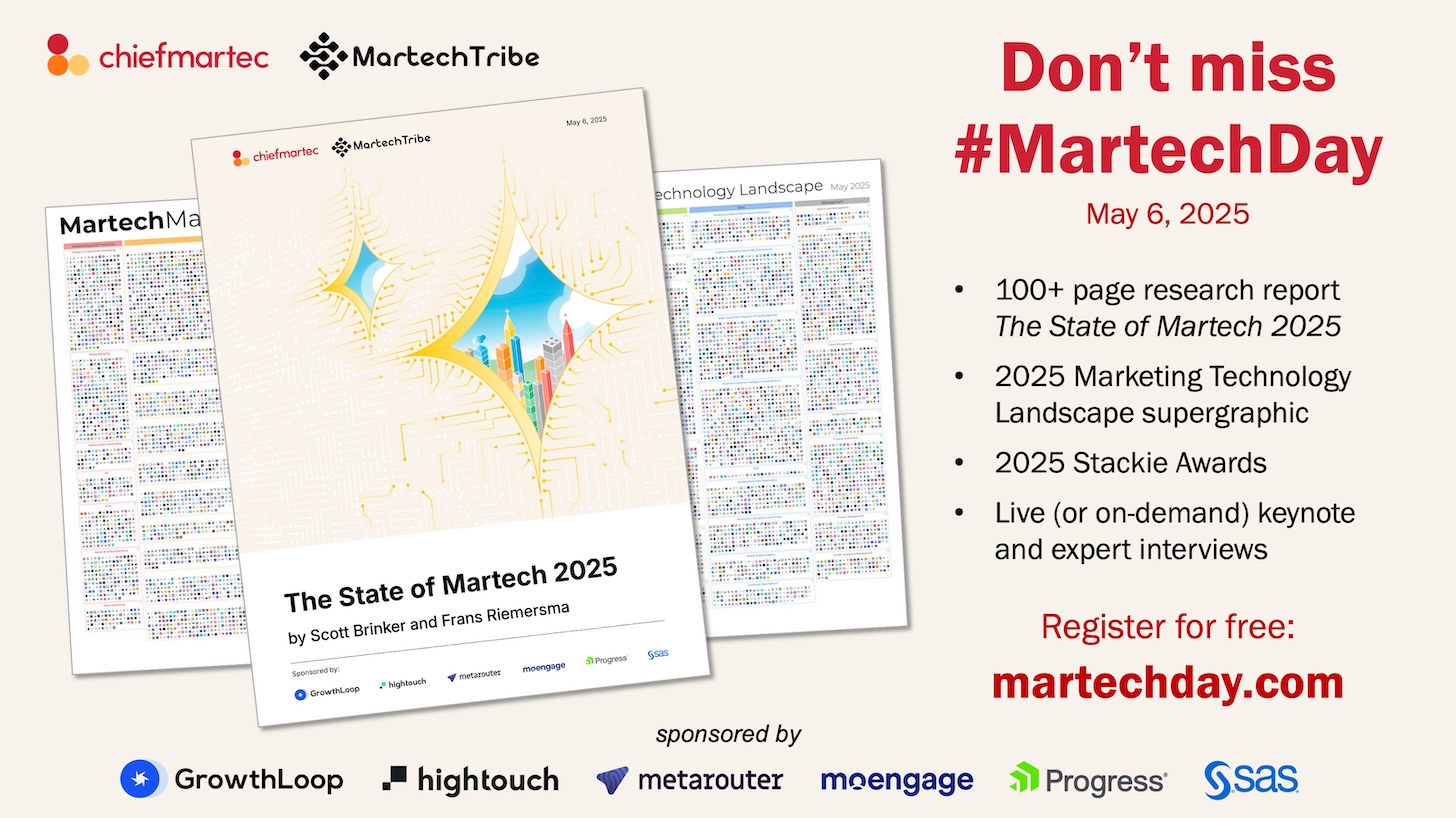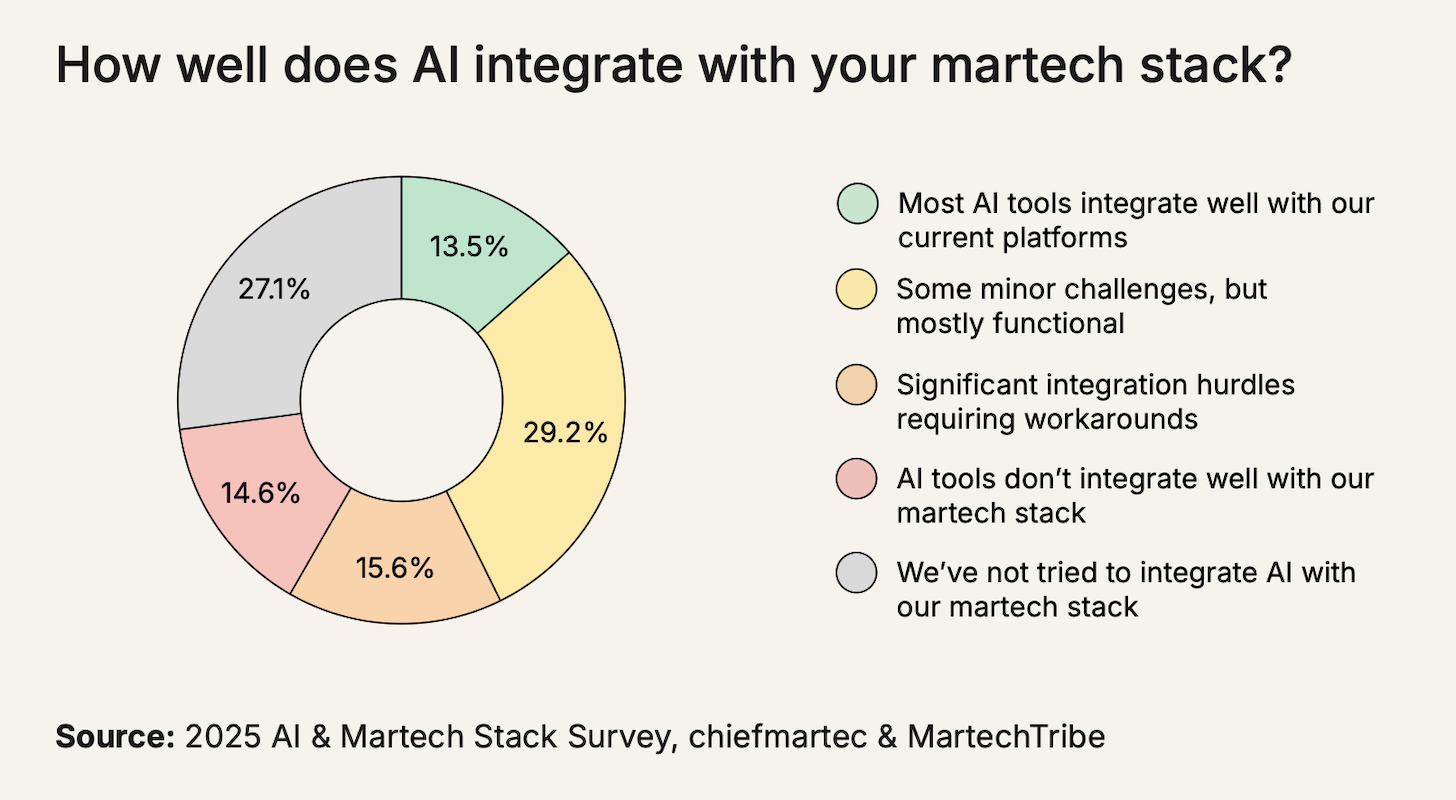
This is a short excerpt of data from The State of Martech 2025 report that will be released on May 6, 2025. You can get the complete 100+ page report and access to an extended keynote presentation of our research by registering for free for #MartechDay.
It’s no surprise that stand-alone AI assistants, such as ChatGPT, Claude, and Gemini have become ubiquitous. In our study of 96 martech and marketing operations leaders, 87.5% reported these tools are now widely used in their marketing department.
But what about deeper embedding of AI in the martech stack?
Overall, 42.7% of our respondents said that AI tools now integrate well — or with only minor challenges — with their existing martech stack. Although we saw a significant difference between B2B vs. B2C companies, with 54% of B2B reporting easy integration compared to only 15.4% in B2C. (We note that this is an inversion of a prior stereotype of B2C companies being more advanced in martech than their B2B peers.)
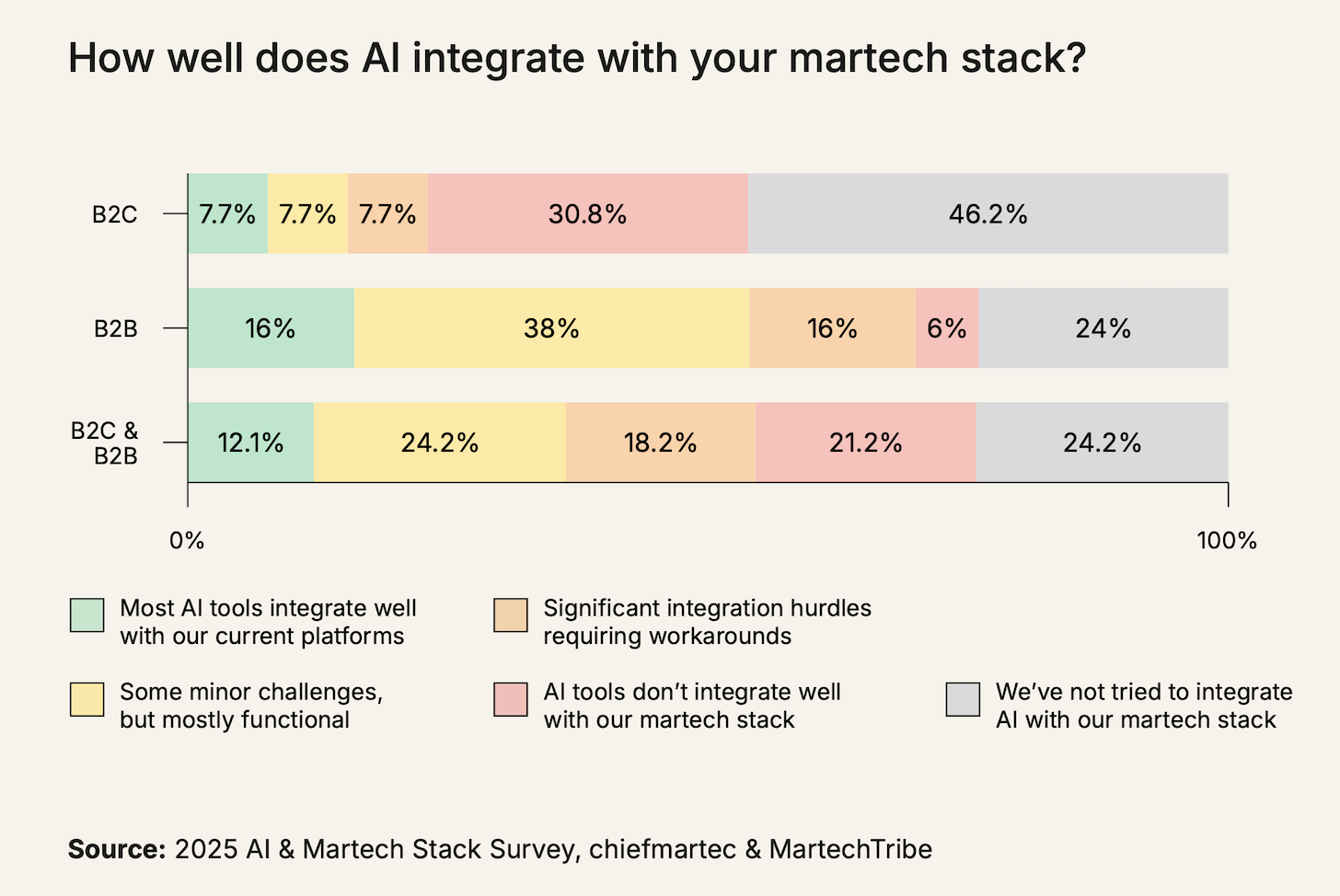
So what are marketers doing with these integrations?
We started — as all good AI discussions should — by asking about data. In particular, unstructured data, as this is where generative AI LLMs have unlocked significant new value. So many insights were buried in calls, emails, and other conversational interactions with customers. But until recently, tapping into those insights in a programmatic fashion was difficult, slow, and expensive.
Suddenly, it’s now quite easy.
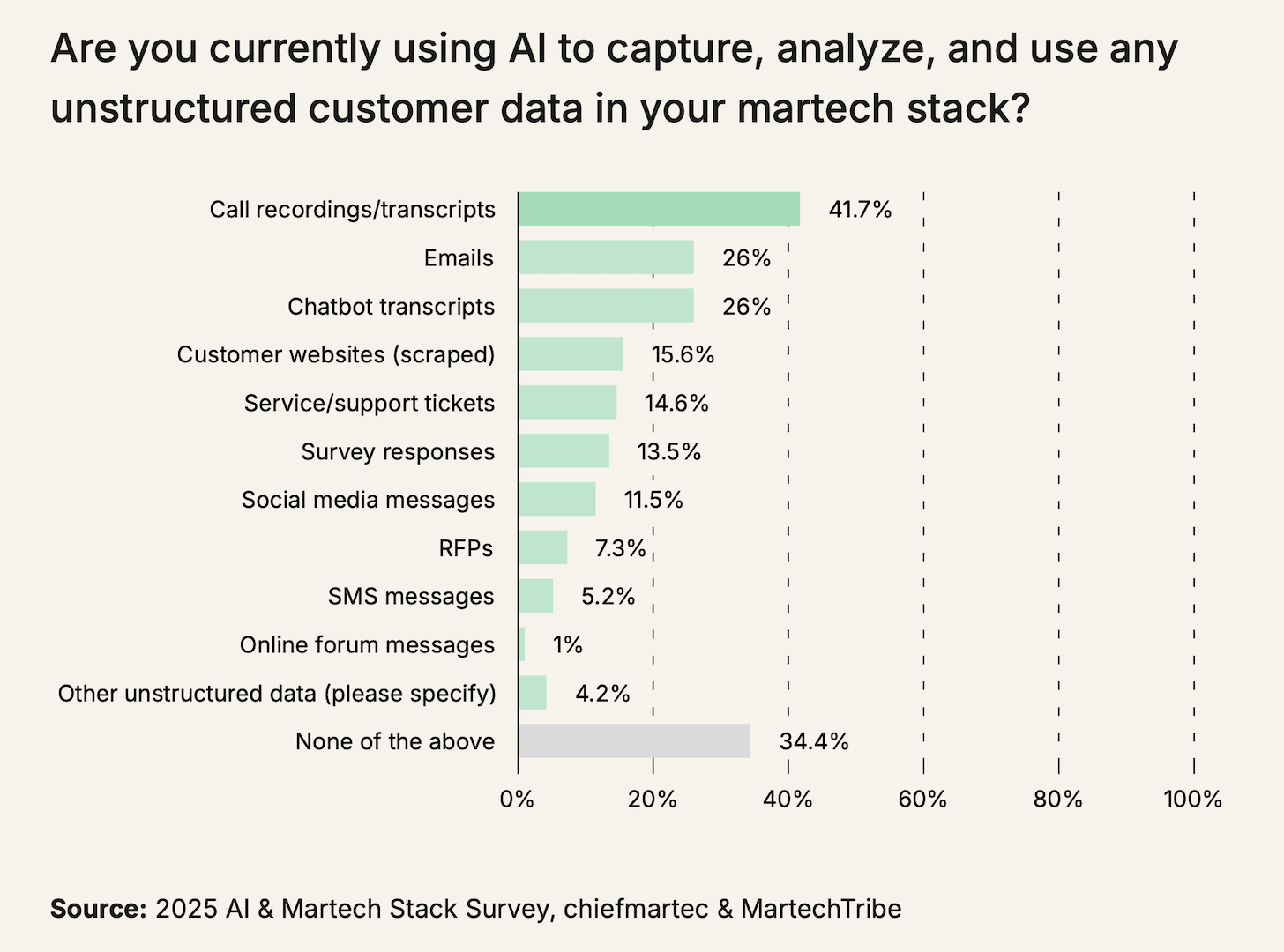
65.6% of our respondents said they currently use AI to capture, analyze, and use unstructured customer data. The most common unstructured data sources are call recordings and transcripts (41.7%), emails (26%), and chatbot transcripts (26%).
A fascinating source of unstructured data that’s emerging, primarily in B2B, are customer websites. 15.6% of our respondents said they scrape websites of prospects and customers to learn about them and tailor messaging and engagement accordingly. Instead of often outdated third-party data about a company, you can now get it straight from the source. This will be game-changing for account-based marketing tactics.
The integration of LLMs into marketing workflows and automations enables a number of creative and productive use cases:
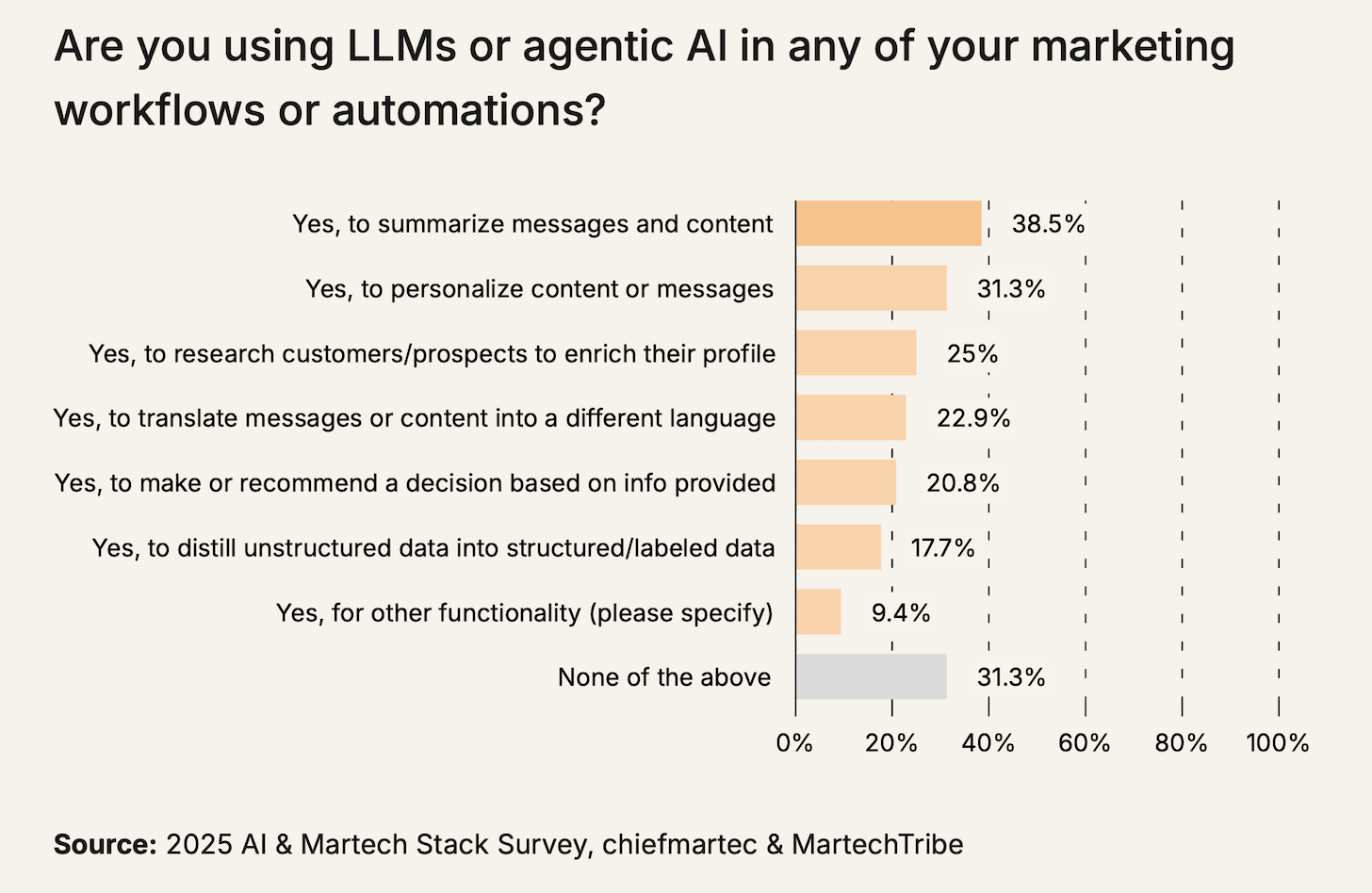
68.7% of the companies in our study have at least one LLM workflow or automation already implemented. “Agentic workflows” are what they’re popularly called, even if the agentic-ness of them — how much autonomy is actually in play — is sometimes debatable.
The most popular use case is summarizing messages and content (38.5%), followed by personalization of messages and content (31.3%) — essentially working with unstructured content flowing in and out of the organization. 22.9% use it for translating messages and content in either direction.
25% use it to research customers/prospects to enrich their profiles — again, more common in B2B environments.
It’s the 20.8% who use LLMs to make or recommend a decision based on structured and/or unstructured data provided that can claim to be actually implementing agentic workflows. Such intelligent decision-making with at least some degree of autonomy has tremendous potential to advance the sophistication and effectiveness of marketing operations. But it’s not surprising that companies are proceeding carefully here. This is powerful, but very new, and we need to feel our way around the jagged frontier of what’s reliable.
Finally, where are these AI automations and workflows being built and run?
Earlier this year, we discussed the seeming free-for-all around digital ops orchestration with AI. Existing SaaS marketing platforms and popular iPaaS/workflow automation products are all vying to be the conductors of AI automation — essentially just expanding on their current, pre-AI role. But they’ve got competition from a wave of new AI agent platforms, as well as more and more custom-built AI.
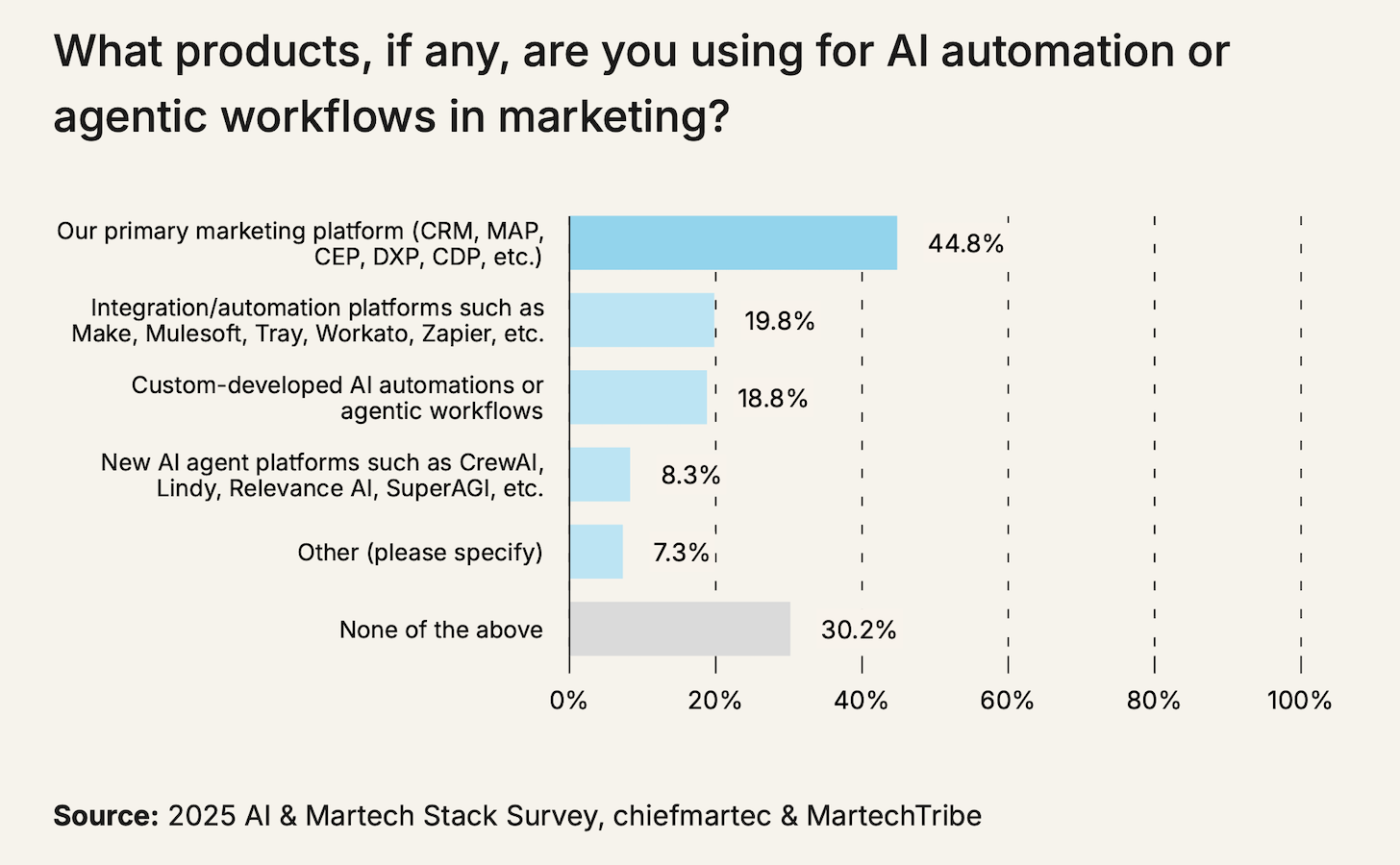
The results of our study show that, at least for now, the incumbent SaaS marketing platforms — CRM, MAP, CEP, DXP, CDP, etc. — have the lead, with 44.8% reporting that’s where they’re implementing AI automations and workflows. The next two, iPaaS/workflow automation tools and custom-developed AI, have less than half that adoption each, at 19.8% and 18.8% respectively.
New AI agent platforms — such as CrewAI, Lindy, Relevance AI, SuperAGI, etc. — have only 8.3% adoption.
Of course, this is still the first inning, if not the pre-game warmup. But initiative matters, and currently the SaaS platforms that have been the backbone of the martech stack are the ones that have it.
This post barely scratched the surface of all the data and research analysis included in the full State of Martech 2025 report. Don’t miss the opportunity to get the full report — along with the latest martech landscape, a deck of illustrated martech stacks from companies such as Itaú, Nationwide, Thomson Reuters, and Verizon, and access to an in-depth presentation of this material live or on-demand. Sign up free for #MartechDay now.
